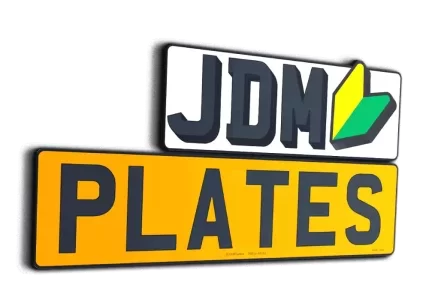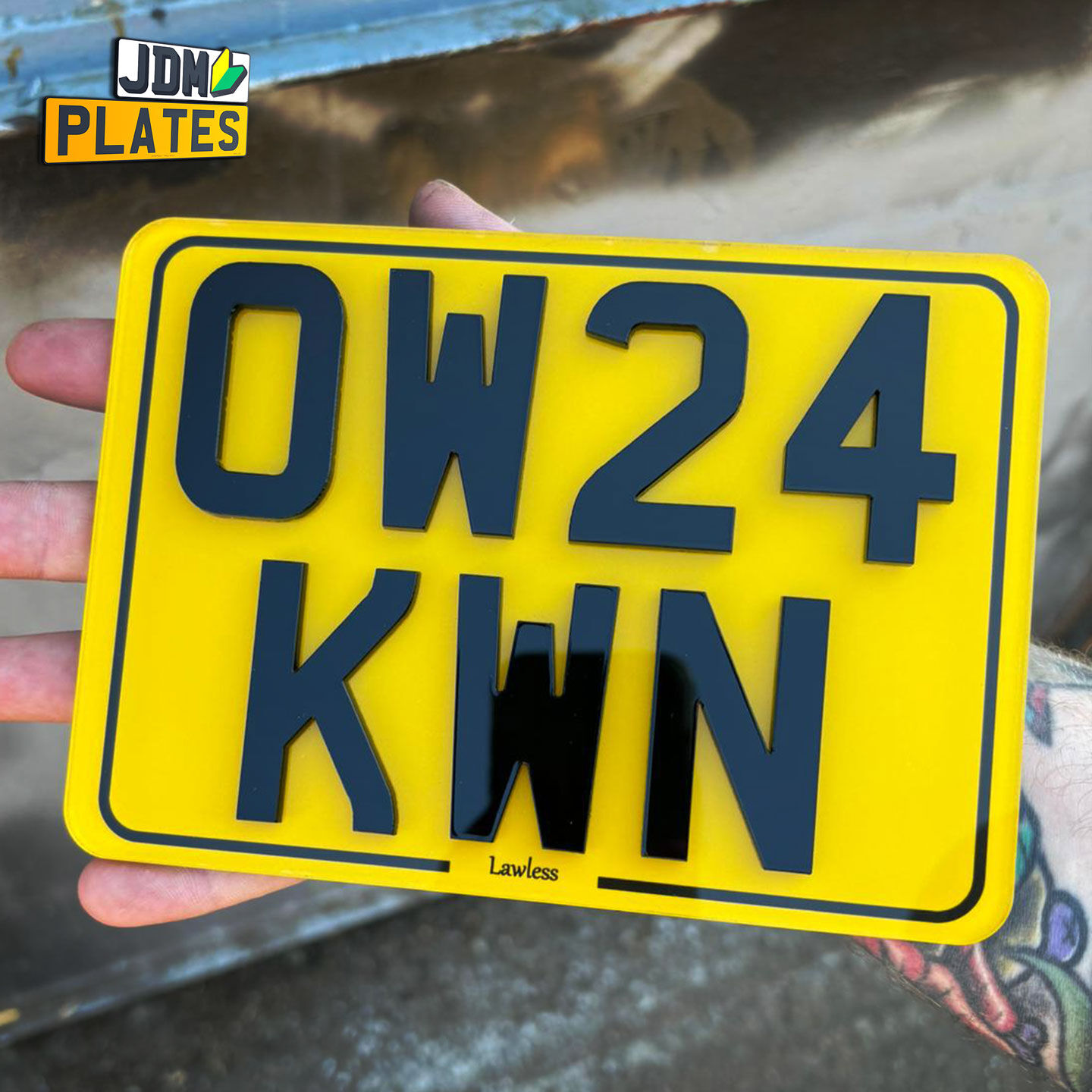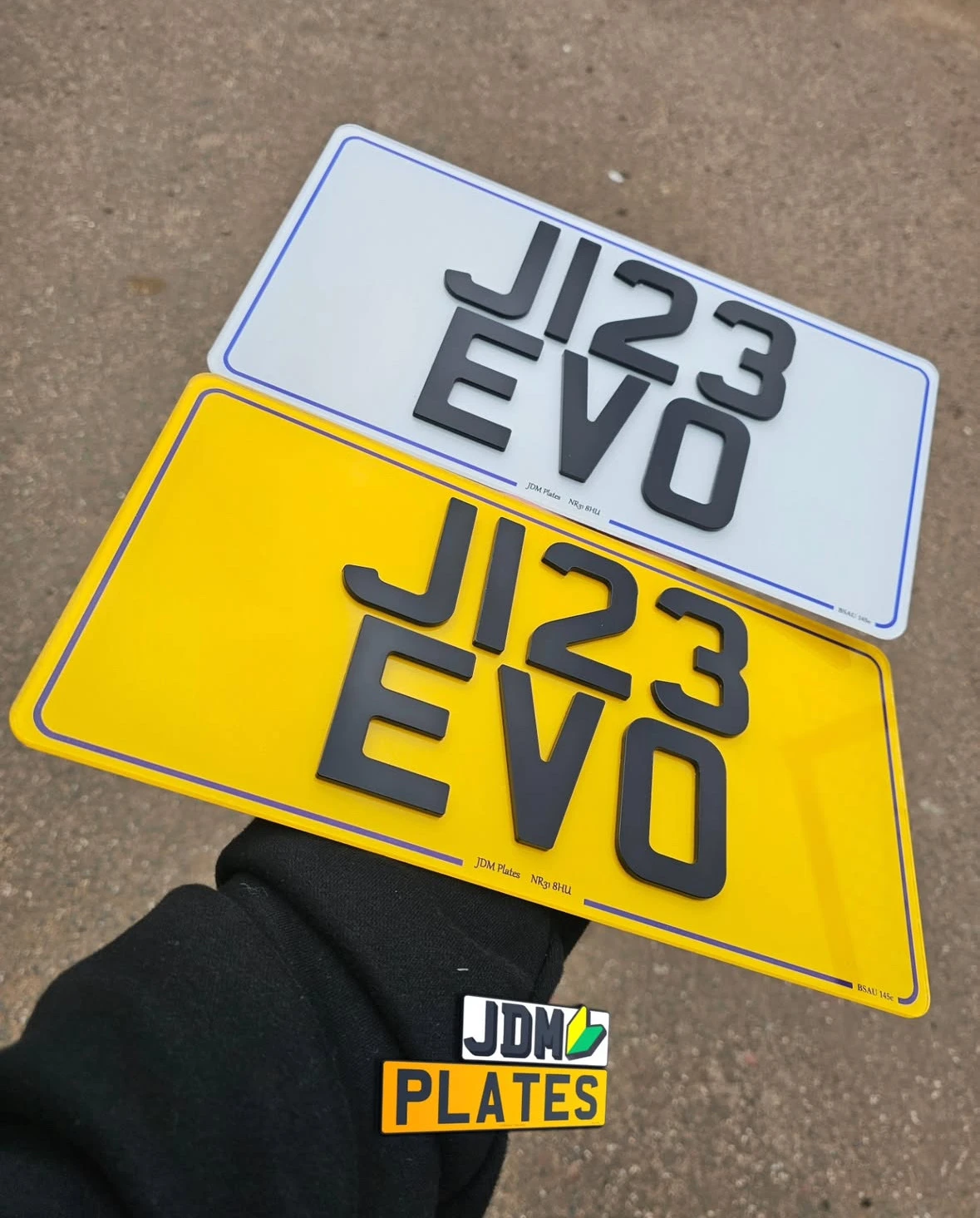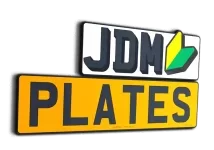Are 3D Gel and 4D Number Plates Still Legal After The Recent Law Change?
If you’re a car or motorcycle enthusiast, we are confident that you have heard of the recent legislation change with regards to numbers plates within the UK; British Standard 145e. This section of the British Standard refers to number plate legislation and in particular, the new ‘145e’ standard refers to a very specific amendment.
You may already have, or are even considering buying some 3D gel number plates or 4D acrylic number plates and are thinking; ‘Are 3d Gel number plates still legal?’ or ‘Will I get fined using 4D number plates?’ – don’t worry, we endeavour to help all motorists within the UK as nobody likes to have a hefty fine so all will be explained by the team at JDM Plates below! Alternatively, feel free to contact us directly via email or phone (see top left).
What is the new 145e number plate standard?
Number plate legislation can be found on the gov.uk legislation website regarding the Road Vehicles (Display of Registration Marks) Regulations 2001. The 2001 regulations are the base layer whereby all amendments are referred to. Within this piece of legislation, all sizes, margins, character sizes and colours are explained. JDM Plates have thoroughly read this specific piece of legislation to ensure that all of our number plates comply with the law. The most recent amendment referring to the new 145e standard can be found The Road Vehicle (Display of Registration Marks) (Amendment) Regulations 2020.
As it can be understood, there is no direct reference to 4D number plates or 3D gel number plates. The 2021 amendment does state that all characters must be black on a white or yellow background and all company information and relevant legal markings need to be permanently marked and non-retro reflecting. The latter can be found on regulation 7, paragraph 6 which states that:-
- The markings required under paragraph 5 must be—
(a)permanently marked;
(b)non-retroreflecting;
(c)of a single shade of non-retroreflecting colour; and
(d)no more than 10 millimetres in height and no less than 3 millimetres in height.
Whereby paragraph 5 states:-
- Each plate must display below the registration mark additional markings showing—
(a)the number of the British standard or other relevant standard or specification as referred to in paragraph 1;
(b)the name of the supplier or manufacturer of the parts used to assemble the registration plate; and
(c)the name and postcode of the supplying outlet of the assembled registration plate displaying the registration mark.
Essentially, all number plates are required to have the company information printed on the bottom of the plate along with their postcode and the BS145e code. However, it is required that there is a 7mm gap between the bottom of the registration number to the top of the company information and the company information has to be between 3mm and 10mm high. This gives transparency of who made the number plates and that the relevant company has collected all the required information needed to produce number plates which helps stop number plate cloning!
Are there any other requirements for 3D number plates?
Although there isn’t any specifically stated in the most recent amendment, there are some extensive tests that number plates need to pass which are set out by the British Number Plate Manufacturers Association (BNMA). Here at JDM Plates, we purchase our materials from a BNMA partner so all of our materials comply with the specifications set out by the BNMA which have been tested by the British Standard Institute (BSI) in order to give the 145e stamp of approval. Some number plate resellers purchase cheaper materials which are non-compliant and will not stand the test of time as they have not been subject to the tests below:-
- Impact testing
- Bending testing
- Thermal change testing
- Abrasion testing
- Weathering testing
- Colourimetry testing
- Retro-reflection testing
- Infrared contact testing
More information of these tests can be found on the BNMA website.
I thought 4D number plates would be made illegal in September?
It was initially perceived that 4D number plates and 3D gel number plates would be made illegal in September when the new 145E standard was released. However, it was argued that 4D number plates are actually more readable than generic printed plates. Printed number plates begin to fade over time when being exposed to sunlight and UV rays whereas 4D letters will always be black. The next point was aimed towards the materials 4D and Gel number plates comprise of. With regards to 4D number plates, it was made aware that 4D number plate characters are made of acrylic and high quality adhesive; generally 3M adhesive which is of similar standard and quality of blank number plates. With the above in mind, a conscious decision was made that 4D number plates were made legal as it would contradict the structural integrity of all number plates within the market as fundamentally they are all made of the same materials. The only grey area belongs with gel number plates as this has to do with the resistance to abrasion and weathering. Overtime, gel number plate characters may fade slightly due to repeat grit, dirt and UV rays. However, this is also true for printed number plates as previously mentioned. Liquid lens, who are a massive supplier of high quality 3d gel number plate characters do advertise that the digits they sell are compliant with 145d and 145e legislation and are adamant that their specific manufacturing process allows 3D gel number plate characters to be used on the public highways while BS145e is in force.
Further evidence that 3D and 4D number plates will be legal after September 2021…
On the 19th July 2021, a government petition had closed with 13,255 signatures protesting against the ban of 3D and 4D number plates; the petition and government response can be found here (add hyperlink: https://petition.parliament.uk/petitions/569318). Paraphrasing, it is explained that all number plates need to meet the specification above with regards to the company information and spacing. Also, the government response states that ‘The new British Standard for retroreflecting number plates does not that number plates with raised characters, including 3D gel and 4D number plates, will not be permitted.’
To Summarise, are 3D / 4D number plates legal from September 2021?
In summary, 4D number plates and 3D gel number plates can be interpreted as still being road legal under the new 145e standard so long as the correct materials have been used, the relevant documentation has been recorded and the correct company information being printed onto the bottom of the plate whilst complying with the correct margins and spacing. As an additional security against being fined if you are ever stopped for your number plates, here at JDM Plates we offer a declaration of legality with all of our number plates which explains all of the legislation we comply with whilst displaying our company information and DVLA RNPS reference number.





